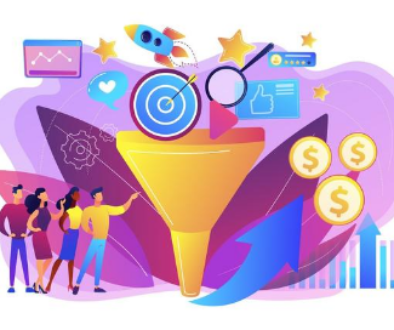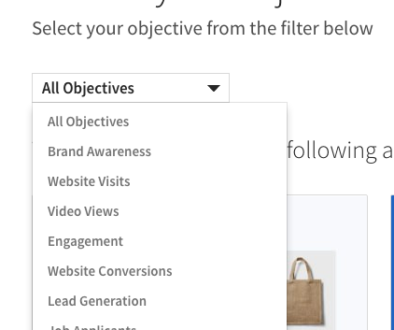How to Actively Grow Your LinkedIn Network During Social Distancing and Beyond
When you increase your LinkedIn connections by one person, you’re actually increasing your network by thousands. For every first degree connection you add to your LinkedIn network, you instantly gain hundreds of 2nd-degree connections and thousands of 3rd-degree connections. And, if one of your connections likes one of your […]

When you increase your LinkedIn connections by one person, you’re actually increasing your network by thousands.
For every first degree connection you add to your LinkedIn network, you instantly gain hundreds of 2nd-degree connections and thousands of 3rd-degree connections. And, if one of your connections likes one of your posts, their connections have the potential to see that update.
This is one reason why is it so important to actively add connections rather than to just sit back and accept connection requests from others.
- Become a member of key industry groups on LinkedIn where you can find like-minded professionals and share content that establishes you as a subject matter expert and expands your network. Perhaps most importantly, belonging to a group instantly grants you access to sending connection invites to every other member within that group.
- Request to join the alumni groups of any of your former places of employment and reconnect with former colleagues with whom you’ve lost touch who are also members of those groups. Each time you add a company to your list of prior jobs in your profile, you automatically follow that company but not its accompanying alumni group. So, you'll need to manually find the corresponding alumni group and request membership.
- Also join the LinkedIn alumni groups of each educational institution you attended. Search for contacts through these groups and add them to your network. Make a list of individuals with whom you lost touch and once you connect with them, reach out to touch base – this is the perfect time to reestablish connections.
- Review your connections’ connections. Whom do they know that you know? This is why it’s a good idea to link in with colleagues and former colleagues so that you can see their connections and then add them to your network.
- Look through your competitors’ connections. This is a great source of CI and shared contacts.
- Consider connecting with certain friends and family members. We often overlook mixing our personal and professional lives and we shouldn’t – oftentimes this is a source of potential business opportunities.
- Connect with anyone who engages with your content or content in which you’re mentioned.
- Connect with anyone who follows you. Note that a "follow" is different than connecting – an individual can choose to follow you (without connecting to you), depending on your settings, in order to receive your posts. I always take it a step further and invite someone to join my network if they’ve elected to follow me.
- Utilize the “People You May Know” feature. The more you use it and choose to connect with the potential connections it suggests for you (based on your connections’ connections, past education, employers, education and interests), the more targeted your future connection suggestions will be.
- Reconcile your LinkedIn contacts with your Outlook address book and CRM system. Most people today don’t send an email to let you know that they are leaving their job along with their new contact information/vCard. They usually just update the information on LinkedIn, so it’s up to you to do the due diligence to find out where they landed and then, most importantly, to update their contact information in your CRM system to ensure that they still will receive client alerts/invites, etc. (What’s the point of having all of these great professional contacts if they aren’t getting your mailings? At the very least, make sure to share them on LinkedIn.)
- Beware of LinkedIn’s mass “Import Your Contacts” prompt. I recommend that you never click on any of the prompts on LinkedIn where it asks you to upload your address book or send a mass LinkedIn invite to your contacts. You can wind up inviting every single person in your address from the history of time. Like your gardener. Your grandma. Your high school boyfriend. Only do this if you really want to be in touch with these people and field their confused questions about why you’re adding them to your professional network. Unfortunately there is no way to invite everyone from your address book in one mass invite to connect with you on LinkedIn.
Building your LinkedIn network takes time – but I promise it’s well worth the effort especially now in this time of social distancing. LinkedIn will be the most important tool for business networking for the foreseeable future.
Stefanie Marrone advises law firms of all sizes, professional service firms, B2C and B2B companies, professional associations and individuals on the full range of marketing and business development consulting services designed to enhance revenue, retain current clients and achieve greater brand recognition. She also serves as outsourced chief marketing officer/marketing department for smaller firms. Over her nearly 20-year legal marketing career, she has worked at and with a broad range of big law, mid-size and small firms, which has given her a valuable perspective of the legal industry. At each of these firms, she has developed and executed revenue generating, business development, internal and external communications strategies, and social media and content marketing campaigns for practices, industries and individual lawyers. She is very passionate about using social media for lead generation and brand building. Connect with her on LinkedIn and follow her latest writing on JD Supra as well as her blog The Social Media Butterfly.

![Lead Generation & Conversion: Techniques for Long-Term Success [Checklist] Lead Generation & Conversion: Techniques for Long-Term Success [Checklist]](https://www.prolitigation.com/wp-content/uploads/2020/08/leader_1597267855-512x600-2-394x330.png)


